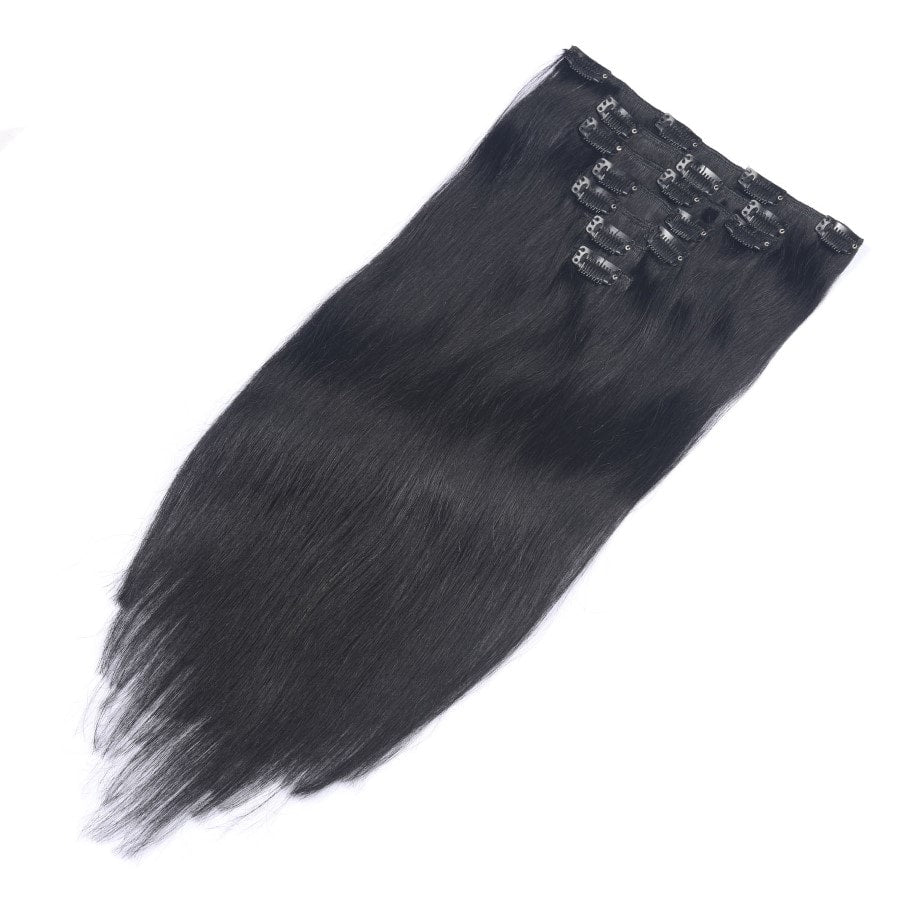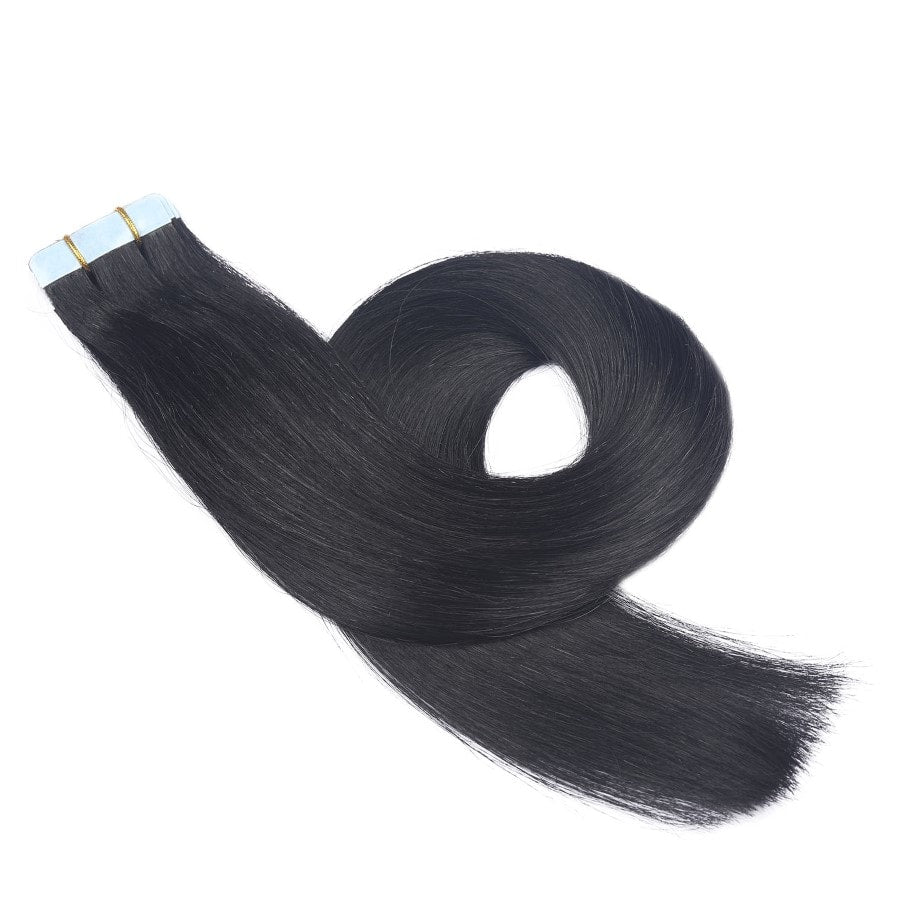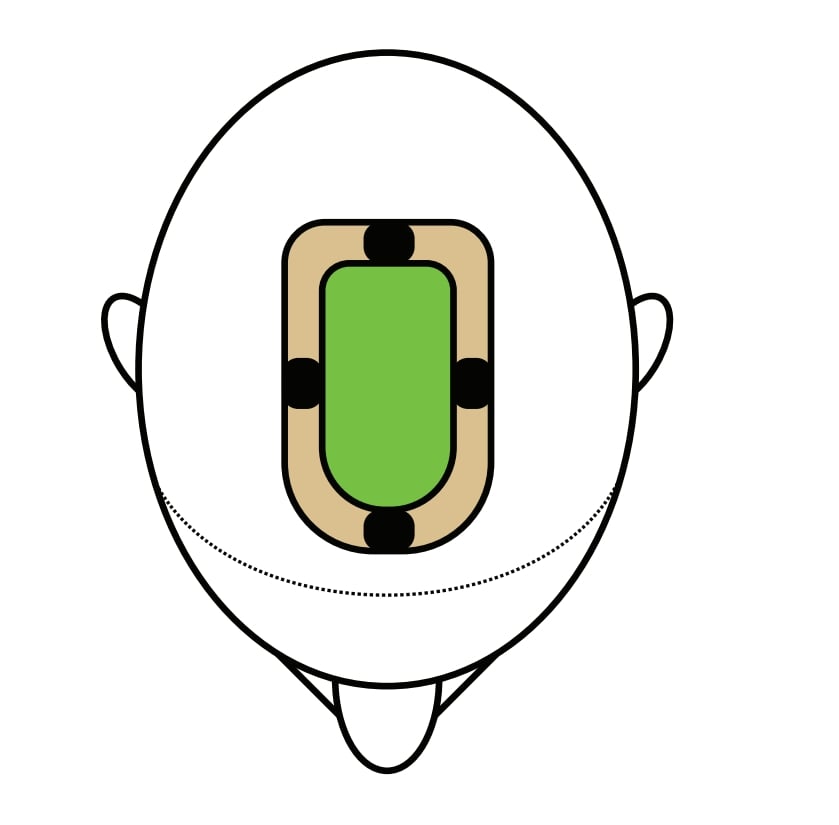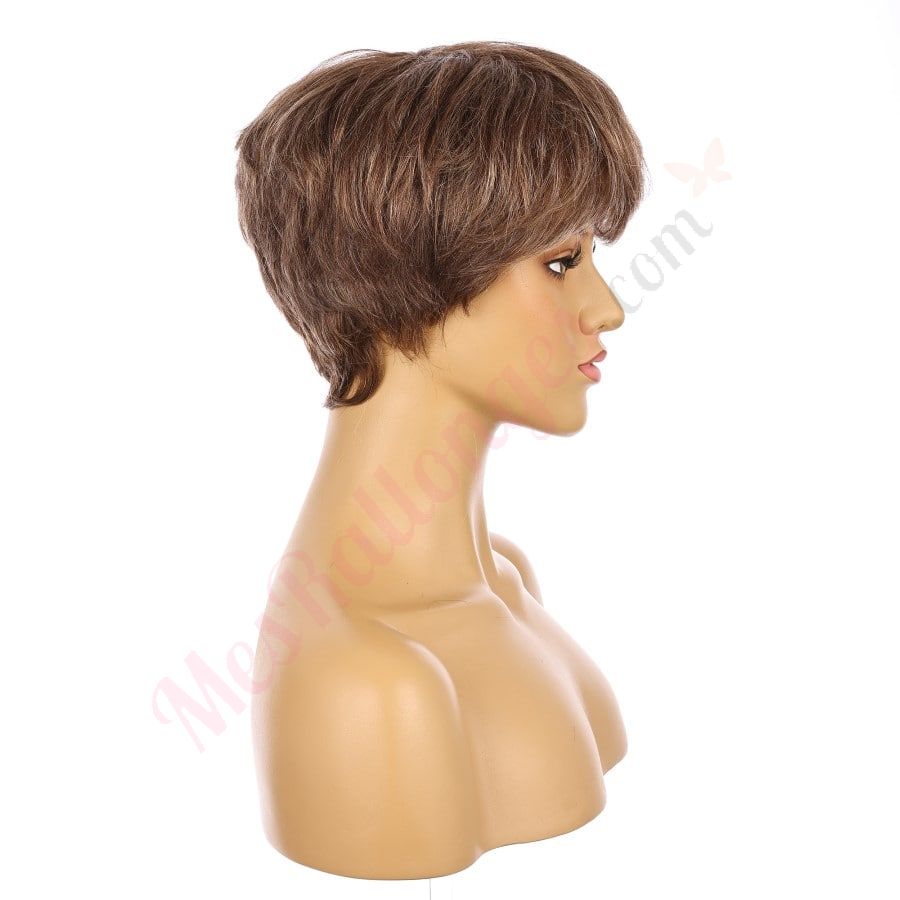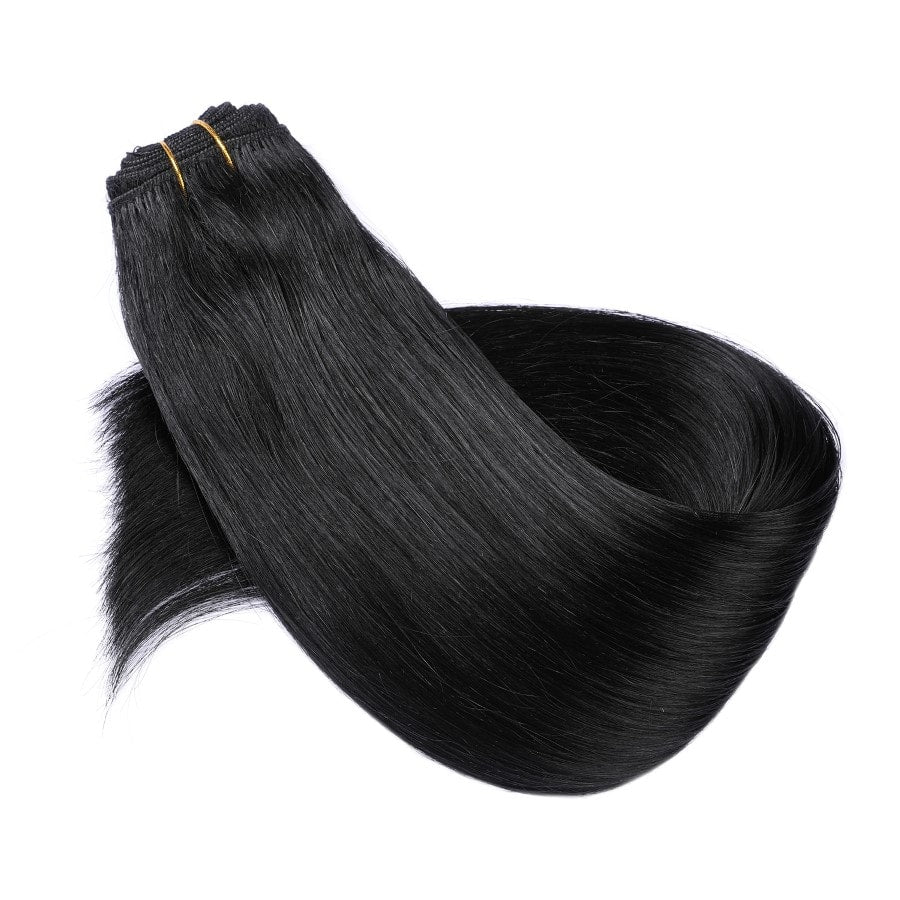Les extensions de cheveux sont un excellent moyen d'ajouter de la longueur et du volume à vos cheveux, mais elles peuvent parfois s'agglutiner, provoquant frustration et déception. Plusieurs raisons peuvent expliquer ce phénomène, comme l'utilisation d'un type d'adhésif inapproprié ou des extensions de cheveux de mauvaise qualité. L’utilisation d’un shampooing hydratant et de produits coiffants légers peut aider à garder vos extensions lisses et sans nœuds. Il est également important de vous assurer que vos extensions sont faites de cheveux Remy naturels et correspondent à la texture de vos cheveux naturels.

Pour éviter les grumeaux, vous devez faire attention aux produits que vous utilisez et à votre routine de soins capillaires. Les gels et crèmes lourds peuvent alourdir vos extensions, les rendant plus sujettes aux grumeaux. De plus, l'utilisation d'une brosse à boucles ou à poils de sanglier aidera à prévenir la casse et à garder vos extensions en bon état. Un entretien régulier et une manipulation douce sont essentiels pour préserver la qualité de vos extensions de cheveux.
Pour les personnes confrontées à des problèmes persistants, demander conseil à un professionnel peut faire une grande différence. Les experts capillaires peuvent offrir des conseils et des traitements personnalisés pour que vos extensions restent magnifiques. Cela peut vous faire gagner du temps et des efforts à long terme et garantir que vos extensions de cheveux restent en parfait état.
Principaux points à retenir
- Un entretien approprié évite l'agglutination des extensions de cheveux.
- Utilisez un shampooing hydratant et des produits coiffants légers.
- Demandez conseil à un professionnel en cas de problèmes persistants.
Comprendre l'agglutination des extensions de cheveux
Les extensions de cheveux peuvent s'agglutiner pour plusieurs raisons. S'attaquer à ces causes profondes et savoir comment les différents types de cheveux et d'extensions affectent l'agglutination peut vous aider à garder vos extensions lisses et faciles à coiffer.
Causes courantes de l'agglutination
Les amas capillaires commencent souvent par des nœuds. Lorsque les extensions ne sont pas brossées régulièrement, elles peuvent former des nœuds. Ce phénomène est plus fréquent avec les cheveux synthétiques, car ils ont tendance à s'emmêler plus facilement que les cheveux humains.
L'utilisation de produits coiffants lourds comme les gels et les crèmes peut alourdir les cheveux. Cette accumulation peut faire coller les extensions les unes aux autres et les agglutiner. Il est également essentiel d'éviter la surcharge en protéines. Trop de protéines peuvent rendre les cheveux raides et entraîner des grumeaux. Au lieu de cela, un après-shampooing hydratant peut aider à maintenir la souplesse des cheveux.
Les extensions endommagées par la chaleur ou les produits chimiques ont également tendance à s'agglutiner. La lumière directe du soleil, le chlore et l'eau salée peuvent endommager les cheveux, les rendant plus susceptibles de s'emmêler et de s'agglutiner. Un entretien régulier et des soins doux sont essentiels.
Le rôle de la texture des cheveux et du type d'extension
La texture des cheveux joue un rôle important dans la probabilité que les extensions s'agglutinent. Les personnes aux boucles naturelles peuvent constater que leurs extensions s'emmêlent plus facilement. Les cheveux fins peuvent également avoir tendance à s'agglutiner, car ils sont délicats et peuvent s'abîmer rapidement.
Le type d’extension utilisé est également important. Clips-ins , Les extensions à bandes adhésives et à coudre ont chacune des tendances différentes à s'agglutiner. Les extensions à clipser peuvent être retirées et brossées quotidiennement, ce qui réduit les nœuds, tandis que les extensions à coudre sont plus permanentes et nécessitent un entretien régulier.
Les extensions de cheveux humains se portent souvent mieux que les extensions synthétiques car elles ressemblent davantage aux cheveux naturels. Elles peuvent être traitées avec les mêmes produits et méthodes que celles que l'on utiliserait sur ses cheveux normaux.
Entretien approprié des extensions de cheveux
L'entretien correct des extensions de cheveux implique un lavage et un conditionnement réguliers, un brossage régulier et un séchage soigneux. Ces étapes garantissent que vos extensions de cheveux les extensions restent lisses , sans enchevêtrement et en bon état.
Lavage et conditionnement de routine
Pour garder les extensions de cheveux propres et saines, elles doivent être lavées avec un Shampooing sans sulfate . Les sulfates peuvent éliminer l'humidité et provoquer une sécheresse, entraînant ainsi la formation de grumeaux.
Après le shampooing, appliquez une revitalisant hydratant sur les extensions et laissez agir quelques minutes avant de rincer abondamment. Pour une hydratation supplémentaire, pensez à utiliser un revitalisant sans rinçage ou masque capillaire une fois par semaine pour garder les extensions douces et faciles à coiffer.
Étapes de lavage :
- Mouillez les extensions avec de l'eau tiède.
- Appliquez le shampooing sans sulfate en massant doucement.
- Rincer abondamment.
- Appliquer l'après-shampooing et laisser agir 2 à 3 minutes.
- Rincez à nouveau et essorez doucement pour éliminer l'excès d'eau.
Importance du brossage régulier
Il est essentiel de brosser régulièrement les extensions de cheveux pour éviter les enchevêtrements et l'agglutination. Un peigne à dents larges ou un brosse spéciale pour extensions de cheveux il est préférable d'éviter d'endommager les mèches.
Commencez à brosser les extensions depuis les pointes, puis remontez jusqu'aux racines, en tenant les cheveux au milieu pour réduire la tension sur les liaisons. Il est recommandé de brosser les extensions au moins deux fois par jour et toujours après le lavage.
Conseils de brossage :
- Utilisez un peigne à dents larges pour démêler.
- Brossez-vous les dents tous les matins et avant de vous coucher.
- Appliquez un après-shampooing sans rinçage pour faciliter le démêlage.
Pratiques de séchage sécuritaires
Il est important de sécher les extensions de cheveux en toute sécurité pour éviter les dommages causés par la chaleur et l'agglutination. Séchage à l'air est la méthode la plus saine, mais si vous utilisez un sèche-cheveux , réglez-le sur un réglage froid ou à basse température.
Évitez de dormir avec des extensions mouillées, car cela peut provoquer des nœuds et des nœuds. Utilisez une serviette douce pour sécher délicatement les extensions et évitez de les frotter vigoureusement.
Conseils de séchage :
- Sécher à l'air libre si possible.
- Utilisez un sèche-cheveux à température froide ou basse si nécessaire.
- Tamponnez avec une serviette au lieu de frotter.
En suivant ces pratiques d’entretien clés, les extensions de cheveux peuvent rester en excellent état et durent plus longtemps . Des soins réguliers aident à prévenir le problème courant de l'agglutination et à garder les extensions à leur meilleur.
Les effets du style et des produits
Utiliser les bons produits et les bonnes techniques est essentiel pour éviter que les extensions de cheveux ne s'agglutinent. Choisir des produits doux et hydratants et faire attention à la chaleur sont des facteurs clés.
Choisir les bons produits coiffants
Il est essentiel de sélectionner des produits coiffants appropriés. Shampoings et après-shampooings hydratants aide à empêcher les extensions de cheveux de devenir sèches et cassantes. Après-shampooings sans rinçage et les produits coiffants légers tels que les sérums et les sprays peuvent également aider à réduire les enchevêtrements et les grumeaux.
Évitez les produits contenant parabènes et silicones . Ceux-ci peuvent s'accumuler sur les cheveux, les alourdissant et les rendant sujets à l'agglutination. Optez plutôt pour formules naturelles et douces . Produits labellisés sans sulfate sont souvent plus respectueux des extensions de cheveux.
De plus, en utilisant un taie d'oreiller en soie peut minimiser les frottements et les enchevêtrements pendant le sommeil. Cela facilite la gestion des cheveux le matin.
Coiffage à chaud et extensions de cheveux
Lorsque vous utilisez de la chaleur pour coiffer des extensions de cheveux, il est essentiel d'utiliser un Spray protecteur de chaleur . Il protège les cheveux des dommages causés par les températures élevées. Séchage au sèche-cheveux, lissage et bouclage peut rendre les extensions de cheveux plus sujettes à l'agglutination si elles ne sont pas effectuées correctement.
Il est conseillé de sécher les extensions de cheveux à l'air libre dans la mesure du possible. Une utilisation excessive de chaleur peut provoquer un dessèchement et un emmêlement des cheveux. Si un séchage au sèche-cheveux est nécessaire, utilisez le bouton de prise de vue cool sur le sèche-cheveux pour réduire l'exposition à la chaleur.
Limiter l'utilisation de produits chimiques agressifs et éviter outils de coiffage chauffants qui ne disposent pas de réglages de chaleur réglables. Cela peut aider à maintenir la qualité et la longévité des extensions de cheveux.
Des soins appropriés avec les bons produits et techniques peuvent empêcher les extensions de cheveux de s'agglutiner et les garder lisses et saines.
Soins et conseils professionnels
Un entretien régulier et des soins appropriés par un coiffeur peuvent empêcher les extensions de cheveux de s'agglutiner. Des rendez-vous fréquents et de bonnes pratiques à domicile sont essentiels.
Quand consulter un styliste
Il est essentiel de visiter un styliste professionnel toutes les 6 à 8 semaines. Cela permet un entretien de routine, comme le « soulèvement » ou le rattachement des extensions au fur et à mesure que les cheveux naturels poussent. Ces rendez-vous permettent de garantir la les extensions restent solidement attachées et éviter les enchevêtrements.
Visites régulières au salon donnez également au coiffeur la possibilité de vérifier les éventuels dommages ou problèmes tels que les nœuds. Il peut couper les extrémités des extensions et fournir des conseils personnalisés sur le maintien de leur santé. N'hésitez pas à poser des questions lors de ces rendez-vous pour vous assurer que vous suivez meilleures pratiques de soins pour votre type spécifique d'extensions.
Soins prolongés à long terme
Les soins de longue durée impliquent des soins constants entretien de la maison combiné avec des traitements professionnels. En utilisant un shampooing et revitalisant hydratants est essentiel pour garder les extensions de cheveux lisses et hydratées. revitalisant sans rinçage peut également aider.
Avant de vous coucher, il est conseillé de tresser vos extensions de cheveux ou de les faire tenir en queue de cheval. Cela réduit les frottements et évite les nœuds pendant le sommeil. Évitez de dormir avec les cheveux mouillés, car cela peut entraîner de graves amas de cheveux.
Pour une protection supplémentaire, minimisez l'exposition à chlore, eau salée, et la lumière directe du soleil. Si l'exposition est inévitable, le port d'un bonnet de bain ou l'application d'un spray protecteur peuvent aider à maintenir la qualité des extensions. Un brossage régulier de bas en haut, à l'aide des bons outils, aide à garder les mèches démêlées et en bonne santé.
Questions fréquemment posées

Soins et maintenance appropriés peut garder vos extensions de cheveux fraîches. Voici quelques réponses à quelques questions courantes pour vous aider à entretenir vos extensions.
Comment puis-je éviter que mes extensions de cheveux ne s'emmêlent au niveau de la nuque ?
Les nœuds au niveau de la nuque sont fréquents en raison des frottements. Pour éviter cela, brossez régulièrement vos extensions de cheveux avec un peigne à dents larges. Essayez de garder vos cheveux attachés en arrière ou en tresses lâches pour réduire encore davantage les nœuds dans cette zone.
Qu’est-ce qui fait que les extensions de cheveux deviennent crépues et sèches ?
Les extensions de cheveux peuvent devenir crépues et sèches en raison du manque d'hydratation, de l'exposition aux intempéries ou de l'utilisation d'outils de coiffure chauffants. L'incorporation de shampooings, d'après-shampooings et de produits coiffants hydratants peut aider à maintenir les niveaux d'hydratation et la douceur.
Quels sont les indicateurs d’extensions de cheveux de mauvaise qualité ?
Extensions de cheveux de mauvaise qualité Les extensions de cheveux ont souvent une texture rugueuse, une perte de cheveux notable et une apparence terne. Elles peuvent également s'emmêler et s'emmêler facilement. Vérifier la source et les avis des extensions de cheveux peut aider à déterminer si elles sont de bonne qualité.
Comment puis-je empêcher mes extensions de cheveux de s'agglutiner ?
Pour éviter que les extensions de cheveux ne s'agglutinent, utilisez un revitalisant sans rinçage et peignez-les quotidiennement . Évitez de dormir avec les cheveux mouillés et essayez de protéger vos cheveux de toute activité physique extrême qui pourrait provoquer des nœuds.
Le lavage des extensions de cheveux peut-il entraîner des grumeaux et comment l'éviter ?
Laver les extensions de cheveux Trop souvent ou avec les mauvais produits, cela peut entraîner des grumeaux. Lavez vos extensions toutes les 1 à 2 semaines en utilisant un shampooing sans sulfate et un après-shampooing hydratant. Séchez-les doucement avec une serviette pour éviter les nœuds.
Que dois-je faire si mes extensions de cheveux deviennent filandreuses ?
Si vos extensions de cheveux deviennent filandreuses, c'est généralement dû à l'accumulation de produits ou à un manque d'hydratation. Utilisez un shampooing clarifiant pour éliminer l'accumulation de produits et appliquez ensuite un revitalisant en profondeur. Un brossage régulier peut également aider à conserver leur aspect moelleux et à éviter qu'elles ne deviennent filandreuses.


